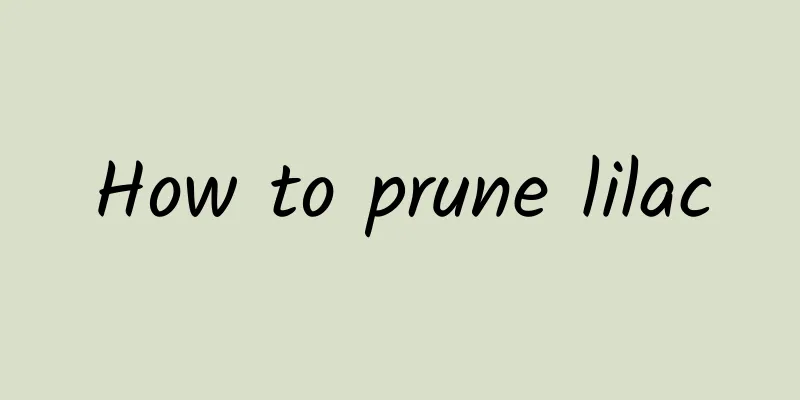Summer cuttings always die? Pay attention to these 6 points and the survival rate will be 100%!

If you don’t know how to choose cuttings, it will be useless!The choice of branches varies depending on the type of flowers being cut. Only by choosing the right branches can the survival rate be improved. 1. Fresh and strong branches When taking cuttings of herbaceous flowers and vines in the summer, you should choose young branches grown in the current year, as such branches have a higher survival rate. 2. Semi-lignified branches Generally speaking, when woody flowers are propagated by cuttings in summer, semi-lignified and sturdy branches are preferred. Such branches take root quickly and are not likely to die easily when potted later. If you cut the branches for grafting like this, big white roots will pop out!Many friends said that the branches were very healthy when they were cut, but why didn’t they survive? A large part of the reason is that the cuttings were not handled properly. 1. How to cut cuttings It will be faster for cuttings to root if they are cut obliquely. It is recommended to cut them at a 45° angle with a sharp blade. In addition, to reduce consumption, you can cut off 1/3 of the leaves. 2. Length of cuttings The length of the cuttings varies according to different types of flowers. But generally speaking, for herbaceous and foliage flowers, the length of cuttings is 5-10cm, and for woody flowers it is 7-15cm. 3. Bud points of cuttings No matter what kind of flower you are cutting, you must keep at least 1 bud on the cutting branch, preferably 2-3 buds, so that the leaves can grow faster later. If you choose the right cutting medium, rooting will be faster!Soil cuttings cannot be separated from a substrate. The peanuts cut by many friends take root very slowly because the cutting substrate is not well chosen or is not disinfected before cutting. 1. Coarse sand The particles of coarse sand are relatively large and have good air permeability. Rinse it several times with water before use. It can be used to propagate plants that take root quickly, such as green radish and ivy. 2. Vermiculite Vermiculite has good air permeability and water permeability. Compared with coarse sand, vermiculite has a higher nutrient content, which can promote plant rooting and is suitable for cuttings of almost all flowers. 3. Coconut bran Coconut bran has good water retention and air permeability, and the nutrients in coconut bran itself are sufficient to meet the growth of flower cuttings. If you don’t disinfect the cuttings, the stems will turn black and rot!If you want cuttings to survive, disinfection is an essential step, which is divided into branch disinfection and substrate disinfection. So what to do? Let’s learn from Huahua! 1. Disinfection of branches It is relatively simple to disinfect cuttings. After treating the cut, soak them in a solution of carbendazim for about 5 minutes. 2. Matrix disinfection There are many ways to disinfect the substrate, but the easiest way in summer is to place the substrate directly in the sun. There will basically be no problem after a day of exposure. Soil or water? In summer, you have to choose water plug!There are two main methods of cuttings: soil cuttings and water cuttings. Comparing the two methods, water insertion is simpler to operate and roots faster! 1. Water insertion (taking gardenia as an example) (1) Prepare the branches that need to be grafted and prepare a foam board and a plastic bottle. (2) Poke a small hole on the foam board and pass the gardenia cuttings through the hole. This will ensure that when the gardenia is placed in water, there is a certain distance between the branch and the bottom of the bottle, which will not affect the subsequent root growth. (3) Make a horizontal cut at 1/3 of the body of the prepared plastic bottle, but do not cut it off. Pour an appropriate amount of water into the bottle and place the gardenia in the bottle. Tape the cut and do not screw the cap on. (4) After about half a month, the gardenia will grow large white roots! 2. Soil cutting (taking jasmine as an example) (1) Prepare the jasmine branches for cuttings, the cutting medium, and the cutting vessels. Disposable plastic cups are recommended as the cutting vessels. (2) Insert the jasmine branches that need to be grafted into the substrate and water them thoroughly. (3) In about 20 days, the jasmine cuttings will take root! Pay attention to these two points after cuttings, and the pot will be full in 1 month!The management after cuttings in summer mainly focuses on light and humidity. As long as they are properly controlled, the cuttings are guaranteed to survive! 1. After cutting, place the flowers in a cool and ventilated place. After a week, place them in a well-lit place for maintenance, but provide appropriate shade at noon. 2. If you use soil insertion, add water to the substrate frequently to ensure humidity. When the air is relatively dry, you can spray the substrate surface appropriately. That’s all I have to say about cuttings. If you have any other questions, Welcome to leave a message for Huahua~ |
<<: Should succulents be cut off after they bloom?
Recommend
When to plant gardenia
1. Planting time Its seeds can be sown in spring ...
Green radish planting method and time cultivation method and steps
The best time to plant radish The planting time o...
How to propagate Chlorophytum comosum
Cutting method Chlorophytum comosum is a very lov...
What to do if the leaves of golden pagoda flower curl up, how to prune (picture)
1. Treatment methods 1. Rehydration and moisturiz...
Can Schefflera arborvitae be planted by cutting?
1. Is it possible? The answer is: Yes. Moreover, ...
When should pepper trees be planted?
Zanthoxylum bungeanum can grow in a variety of en...
How many types of elm bonsai are there? Which type of elm is used for bonsai?
1. Several types Elm bonsai can generally be divi...
Growth environment and characteristics of Bletilla striata
Bletilla striata growth environment conditions an...
What is the best row spacing and plant spacing for mung bean planting?
Mung bean planting spacing Mung beans need to be ...
Can lucky bamboo be planted in the soil?
1. Can it be planted in the soil? It can not only...
Camellia's growing environment and local conditions
Camellia growth environment and conditions Camell...
How to grow green apple arrowroot
Green Apple Arrowroot Growing Conditions Green Ap...
How to grow ginger flower
1. Soil selection Ginger flower is not very deman...
Grandma cut some leeks at her neighbor's house and made dumplings for her grandson, who got poisoned immediately after eating them!
So, today Huahua is here to summarize for you, th...
Snow lotus growth environment conditions and characteristics
Snow lotus growth environment conditions and requ...









